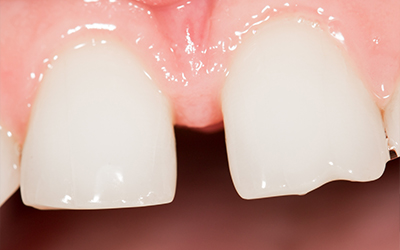Posted on Jan 27, 2020
Gaps in Your Child’s Smile
A+ A- A Main Content
A distinct gap between the teeth is also called diastema. This term is often used to describe the gap that occurs between the two front teeth, as this is the most common gap. Around 50% of kids under six have this gap and it will usually close on its own by or around the age of eight. However, if the gap hasn’t closed once the adult incisor and canine teeth have come in, it may not close on its own at all.
Causes of Gaps in the Teeth
Aside from the natural way the mouth develops, there are also a few other reasons why gaps in the teeth may develop. For example, if there is a mismatch in size between the teeth and the jaws. If your child has a larger-than-average jaw or smaller-than-average teeth, there will be extra space in the mouth, causing gaps. Additionally, bad habits like thumb-sucking or thrusting the tongue against the back of the upper front teeth can also cause gaps.
Gaps in the teeth can also be a result of frenum problems. The maxillary labial frenum is a piece of tissue that connects the underside of the upper lip to the gums between the two front teeth. If this frenum is too large, it can cause a gap between the two front teeth, creating a gap.
Closing a Gap in the Teeth
There are a number of ways for dental gaps to close. If the teeth don’t naturally come together on their own or are brought together by the use of orthodontic braces, there are also cosmetic procedures that can be performed. For example, veneers can be made to fix the look of a gap.
Gaps in the teeth can cause speech problems and lowered self-esteem. However, there are many ways to close gaps in your child’s teeth before these problems become too severe. If you’re concerned about a gap in your child’s teeth, please contact Firestone Pediatric Dentistry and Orthodontics. We are located here in beautiful Firestone, Colorado.


